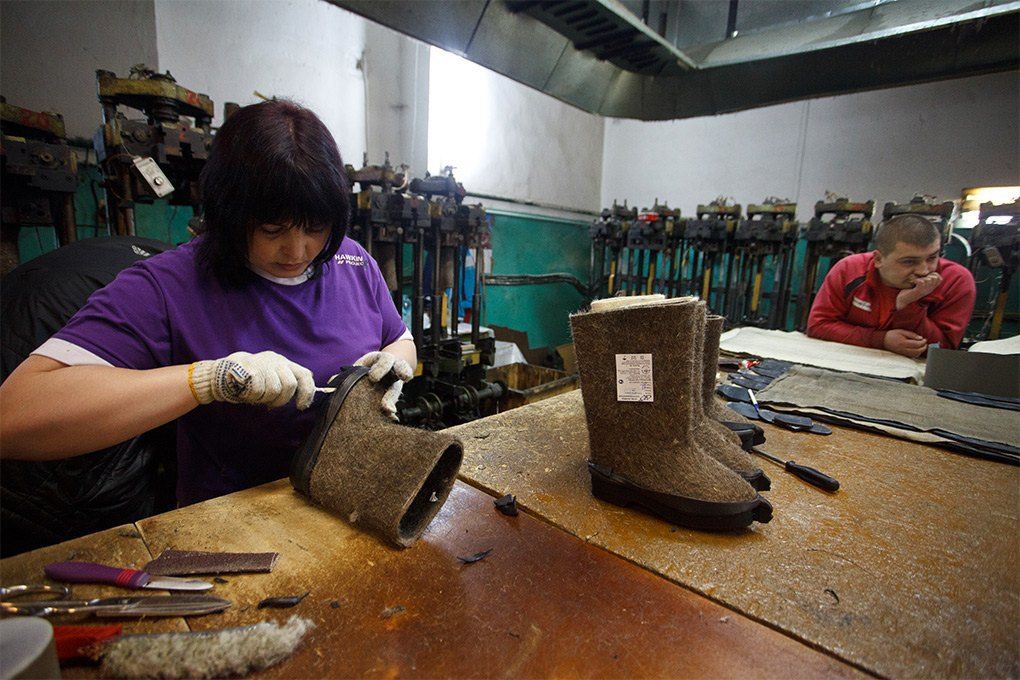Valenki are traditional winter shoes in Russia for dry, frosty weather. Unlike other boots, in appearance and properties, they are made by felting (rolling), and not by sewing.
Historical reference
The first felted boots (pimas) were mentioned in history about one and a half thousand years ago. Steppe nomads used felt shoes to protect their feet from physical damage (thorns, stones, enemy arrows) and cold winter winds. Our ancestors adopted the method of creating comfortable shoes and gradually spread it throughout the country.
Manual felling
Nowadays, there are several dozen pimokat masters who roll boots by hand. It is hard work. Sheep wool is sheared (or bought from livestock owners), sorted, cleaned of debris, and separated by color. For felt boots, approximately 2 kilograms of raw materials are used per adult.

Next, the wool is broken down into a loose fluffy mass. Moisten with hot water and lay out in an even layer, not allowing any difference in the thickness of the future felt boots. Then the pattern is folded to resemble a sock and felted.The felted boot shrinks (shrinks) and becomes hard, dense to the point of rigidity. To give the desired size and the necessary softness, the workpiece is placed on a block and beaten with a wooden mallet. Then they are treated with pumice and sent to dry in the oven. After drying, the finished product is carefully polished again with a wooden block.

Handmade felt boots are created without the use of chemicals, from environmentally friendly material. They come in natural white, brown and gray colors. Each master puts a piece of his soul into his work and uses his acquired secrets. Such shoes will not let you freeze and will not cause calluses. But a pair of felt boots takes from two to five days. This makes it easier for people to buy a factory product.
Mass-produced felt boots
Uggs, popular all over the world, are Australian *relatives* of our felt boots. Initially invented as warm and comfortable sheepskin shoes for shepherds.
In Russia at present there are both large felted footwear enterprises and smaller factories.

Mass production differs from handmade production in terms of volume and the use of different raw materials. Pima are made from the wool of sheep, goats, rabbits and camels. Wool is brought from the countries of Asia, the Caucasus, and Mongolia.
For decoration they use: fur and appliqués, braid and cords, rhinestones, painting. Embroidery with patterns ranging from simple snowflakes to fairy-tale characters on children's felt boots is popular. The product is equipped with a durable rubber sole. To prevent the material inside from deteriorating due to dampness, it is impregnated with chemicals during felting. An ennobled version of the national winter footwear *Finnish* felt boots with embossed soles, lined with waterproof fabric on the outside.

Due to the variety of felted models, the demand for products is constant.Warm pimas are in demand in regions with harsh winters, especially in rural areas. They are taken by hunters and fishermen, ice fishing enthusiasts, summer residents and traders at open markets. They buy it for children and elderly people to maintain their health.


 0
0





